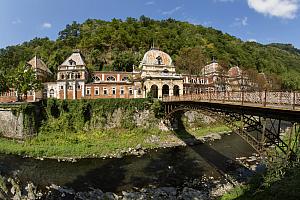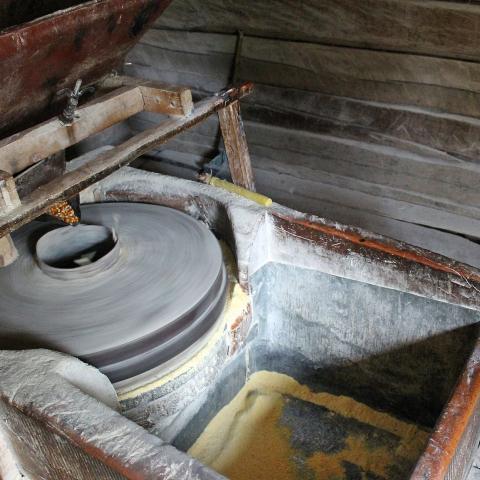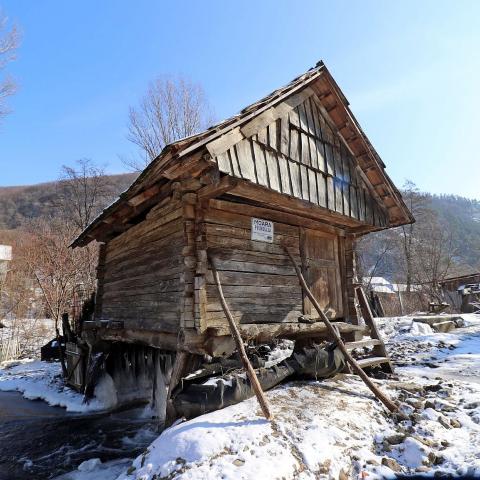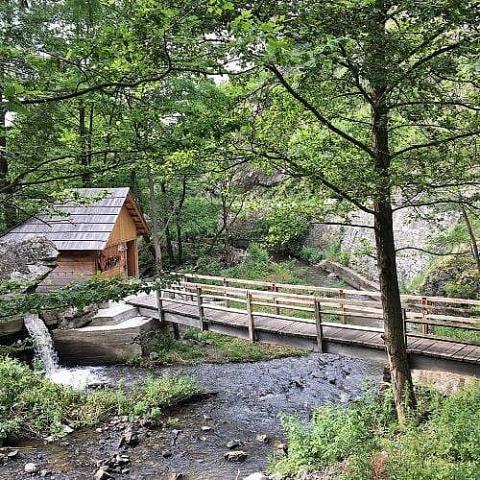A new chapter for Banat's water mills in western Romania
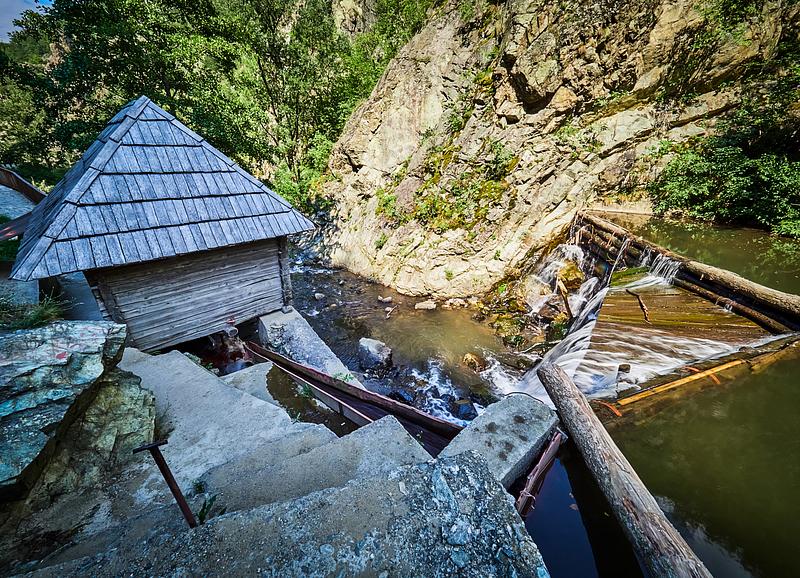
A non-profit active in the region of Banat, in western Romania, is working to repair and revive the region's forgotten water mills and support the communities in exploring the tourism potential of the area.
After mapping the water mills in the region of Banat and repairing 13 of them last year, NGO Acasă în Banat is focusing its efforts this year on Eftimie Murgu/Rudăria, a commune in Caraș-Severin County, in western Romania, known for its 22 water mills. They plan to carry out a series of works designed to encourage tourists to get acquainted with all of the water mills in the village and spend more time on site, discovering its histories and traditional food. Radu Trifan, the president of Acasă în Banat Association, told Romania-insider.com more about how the project dedicated to the water mills came to be, the plans to make Rudăria more tourist-friendly, and why it is important to rediscover the past of the water mills.
How did the idea of the project come about?
We started with several social cases; we still have this social aspect dedicated to helping families in need by renovating, repairing the houses they live in. This is our main activity. Starting from this idea of renovating the homes of the people in need, we thought about helping an entire community, an entire village, and paint the facades. We found this formula of holding a sort of festival where volunteers came and painted the facades of 30 houses in 3 days. This is how the "Color the Village" project was born. When we paint the facades, we chose them knowing they are the homes of underprivileged people, living by themselves, elderly.
Two years ago, we held this project in Eftimie Murgu (Rudăria), the locality of the water mills. The idea was to help this village become more hospitable because, at the time, and this still happens, the tourists who visit the village come, cross it, see the mills located a bit outside of the village, and then leave. This ties into the Țara Morilor de Apă (The Land of the Water Mills) project because we thought about how we could help the southern part of Banat, the mountain area, and realized there are many mills in the area. Afterward, we had the idea of looking for the water mills and seeing how many are left. This became the Land of the Water Mills project.
The first step was to look for these water mills, of all kinds. We carried out a census. We covered close to 10,000 km and looked for all the water mills we could find two years ago. To our surprise, there were very many. We found 250 since then. Not only in Rudăria, with its 22 mills but also in the surrounding villages and in other villages, on Clisura Dunării (The Danube Defile), the Cerna Valley, very beautiful villages but completely unknown to tourists.
After the census, given our activity, the next step was to renovate some of them. Last year, because we lacked funding, we applied for a project and teamed up with Orange Foundation. We won a RON 32,000 (EUR 6,530) financing from them; we planned to renovate ten mills in the area. Last year, the project was very successful. Despite the pandemic, we had many volunteers. We managed to stay within the budget and renovated 12 mills. We also renovated another mill together with the Sasca Montană City Hall. So only last year we renovated 13 mills. The interventions were of all kinds; I think we changed six or seven rooftops only last year. It was a very intense activity, and these are events with volunteers we carried out for two-three days at the most, don't imagine we stayed there the entire year.
This year we applied again with a project with the Orange Foundation and we have managed to win again. This year we will focus on Rudăria, but we might have other interventions as well.
How did you set about tracing the mills?
It was very interesting because, in the collective memory, the idea of the water mill had been lost. Although we were some 100 km away from the village, everyone pointed to Eftimie Murgu, which everyone knows about. And there were many mills in the respective village or in the surroundings, but people stopped thinking about them or care about them.
We first resorted to classic research sources, several specialty works, but these only covered a small part of what the water mills phenomenon meant. We then reached an archive kept at the Astra Museum in Sibiu. It has data from the last census of this type, carried in the 1950s. The communist regime carried out a census of all the means of production, as they were called, in order to tax or nationalize everything that existed as means of production. And they did it well; it has detailed information on all the types of mills – water mills, steam, diesel, electric, wind mills. The latter type unfortunately disappeared; I think only one is left in the country in Tulcea, and the rest are kept at ethnographic museums. We found a wealth of valid information, and we could get a picture of what existed 70 years ago.
Then the field research work followed, with the people in villages, the town halls; we tried to gather information from the town halls. But we had many hilarious situations where the town halls told us there were no water mills in the area, we went and checked and found them, and they were working. We constantly had to go to the primary source of information because if a mill wasn't working, they thought it didn't exist. But it did exist physically, even if sometimes it was badly deteriorated or, in the worst case, only some ruins.
What state did you find them in? How many were still working?
From the 250 we found so far, around 80 are still working, people still use them. There are another 100 that are in a moderate degradation state – they are no longer running, but they are preserved. The remaining ones are close to complete ruin. We did not take into account the places where we found only the foundation or the mill completely collapsed. For instance, one locality had 10-12 mills; today, there are only three and three in ruins. There, we counted only three mills.
Why did the mills stop working?
There are many causes. First of all, beginning with the 1950s, once the larger mills were nationalized, the water mills were modernized and turned into electricity or diesel-powered mills. This was the first step. The second step: once households were connected to the power grid, people gave up on the water mills and started using smaller, electricity mills; they starting grinding in their households and abandoned the older mills. This started in the 1960s.
River engineering and the management against flooding followed and with it a wave of mill demolitions. Many were located very close to or on the riverbed. Closer to the 1990s, many disappeared because they degraded, were swept by waters during flooding; others were dismantled by the owners and used as firewood or construction materials. After the revolution, the process of forgetting about them accelerated, and many were abandoned, left to chance; it is a miracle that some still exist today because some are very old, more than 100 – 150 years old.
Who owned the mills?
There are different cases. There are larger mills, well endowed, and mills that are better equipped technically and which are incorporated into a bigger building or into a household. There are households where one of the rooms is a mill, there is a water stream going beneath, and they are listed in the land registry (CF).
If we take the example of wooden or stone peasant mills of smaller size, sitting above a small water channel, most of them are not listed in the registry. They come with an old property type, devălmășie – the property is passed on by word of mouth from one generation to another. The property is gained by those who take part in maintaining or repairing the mill; they also gain a turn at the mill. Even with this, it is amazing that such an old form of property is still preserved.
Who was doing the grinding?
In the case of the mills in Rudăria, but also the ones in the areas of Almăj, Cornereva, Valea Sicheviței, a group of several families own the mill. If there are 10 – 15 families, they have a well-established schedule; the mill worked around the clock, especially in autumn, when the water flow was bigger. Everybody knew the hour they had the turn at the mill to use it. This still happens today, even though it's not as crowded; everybody knows that Monday is one family's day, Tuesday another's, and so on. Everyone is also a miller. There isn't one miller milling for the others. There were mills of this kind, fewer, where the miller owned the mill and provided the service for the others in exchange for a quota of the output or money in some cases.
You mentioned the cases of people not knowing about the mills close to their locality. Did you encounter other ways communities relate to them?
Yes, we found the opposite, but even in the areas I was talking about a bit of ignorance regarding the mill, people still had an emotional connection with it, to the memories they had about the mill. But this is not enough to go and act to protect them; there is a disconnect between the beautiful memories about the mill and the action needed to maintain it. There are villages where the mill is part of the community; people think it is normal to take care of it and use it. There are good examples in the hamlets, very small villages of 5-10-15 households; we found them in Șopotu Nouș they took good care of the mill, and we even found newly carved wooden pieces for the mill. Cornereva is another fantastic place. It is the commune with the most hamlets in the country, and there are many hamlets with one or two mills; people take good care of them and repair them using traditional methods.
There is also the Eftimie Murgu example, where people see many tourists coming, and this is a validation of how valuable they are and of the fact that they need to be maintained. But it is more the external pressure, so to speak, that determines them to be careful, not necessarily the culture of the place. In Eftimie Murgu, what was decisive was the action undertaken by the Astra Museum at the end of the 1990s, beginning of the 2000s, when they had a massive campaign to renovate the mills. Without it, we would not be speaking today of Eftimie Murgu, only a few would have been left. And there, the external intervention played the determinant part.
What do you plan on doing this year in Rudăria/ Eftimie Murgu?
Rudăria or Eftimie Murgu – in the 70s, the communist regime decided to change its name. The [e.n.1848] revolutionary Eftimie Murgu was born there. Murguleștilor street, where several families related to Eftimie Murgu live, still exists today; they are all Murgulesti there. Unfortunately, there is this confusion between the two names.
This year we have an upgraded concept compared to last year; of course, the main part of our project is repairing, renovating the water mills, but we will also work on the channels and landscaping. We will clean the river; a massive cleaning is needed because large quantities of waste built up alongside the mills. We will work on several tourist arrangements, such as railings, stair steps, benches - items that help one enjoy the area more. We will also do the signage part. At this point in Rudăria, tourists see only eight of the 22 mills. They visit eight, which are located outside of the village, at the entrance to Cheile Rudăriei (Rudăriei Gorges); this is where all the tourists go, and they ignore because they do not have the tourist signage and do not know how to get there, that within the village boundaries, there are another 14 mills, some of them extremely valuable. But they cannot access them and do not know how to get there. We will solve this. We will set up a route that is easy to follow so that we change a bit the way tourism is done there. Now, people arrive by car, get out of the car, take a few pictures of the mill, get back into the car and leave. We want to change this type of tourism. People can leave their cars in the village and go on a hike and visit more mills, all 22 if possible, and discover the village, buy products, stay in the village, maybe overnight, interact with the locals. Because they are a bit disconnected now, the village does not benefit from tourists as long as it is not included in the tourist route.
We also want to do the marketing part and help the people who sell products with a brand of their own. We will do an image with Rudăria and offer it for free so that they can see that it can be done differently.
To what products will the 'made in Rudăria' brand apply?
To all the products but the flour will have a privileged statute because it is the most sought after and we believe in its potential; the flour from the water mill is different, at least the corn one is different from the one found at the store; it is similar to the wheat one in grinding finesse. It is used to make a mămăligă (polenta) called coleșă, it is different, just as polenta is different from the Romanian mămăligă, closer to the Western polenta. This is a differentiating element, and it can be interesting for tourists.
Then other products that are in the village, and maybe the local authorities need to regulate somehow what is sold there because the route from the households to the consumer needs to be found, but the products are of very good quality. The commune has other products that are one of a kind, for instance, brânza de găinușă, which is absolutely fantastic. It is the first cheese made in spring, when the sheep are taken to the forest, and they eat a plant that grows at this time called găinușă. This gives the cheese a special taste; this is brânza de găinușă, which can only be found in small quantities during spring.
Then there is brânza friptă (roasted cheese). It is grilled cheese, in the Almăjului area, in the areas of Oravita, Anina, Resita, it isn't prepared. It is a cheese that can be fried; it is done in a certain way. People serve it with coleșă. This is something you will eat in Rudăria and a few surrounding villages.
It is something we think can bring them a lot of value. There are many such products we have started discovering, and last year we started the project La Masă în Banat (Eating in Banat), which is also a research project trying to highlight these special products and recipes which can help communities develop from a touristic point of view. We have already documented ten locations in Timiș county last year, various recipes, the people, their stories, the stories of the recipes, photographed and filmed them; if we have time, we will try to do the same this year, continue this work of bringing the gastronomic patrimony under the spotlight.
What's next for the water mills project?
On the mapping work, I think we have documented more than 90-95% of the existing mills. I don't think there are many left unknown. The following steps would be to uncover other types of mills. The water mills were just our starting idea, but there are mills with a patrimony value spread into other areas – I'm speaking here about Banat, which is our main area, and this is a challenge for this year or the next to document the industrial mills which didn't run on the power of water.
Related to the water mills, we got affiliated with the International Molinological Society (TIMS). We have been members for two years, attended meetings; we are waiting for the pandemic to end to meet in person; we are trying to bring their expertise to Romania and keep in contact with the experts, the ones at Astra Museum first of all, we collaborated very well with them. We are trying to save as much as possible, but we cannot save them all. If we would repair ten water mills every year, it would still take us 25 years to do them all; it is not likely to happen. The important thing is, through our example, to give the local communities the instruments to do those things themselves, and bring as many people as possible to get involved and save them from disappearing.
Besides the historical aspects we want to bring to light, the water mills are part of that universe that is lost. And with them, we find out the stories of the communities. We think it is important to reconnect with that past, rediscover it, not because we are dreamers or because we think we should live in the past but because these create the stories of the places we live in and create value today, in the present. Especially in the areas that have a tourism potential, we think that the communities in those areas need to extract that value, that story that brings the tourists, makes them fall in love with a place and stay there and bring value to the respective community. Otherwise, this transition from the agricultural economy, telling villagers they need to take up tourism without giving them the instruments is not feasible.
(Opening photo: Thecriss/ Dreamstime, photo gallery source: Acasa în Banat)
simona@romania-insider.com







